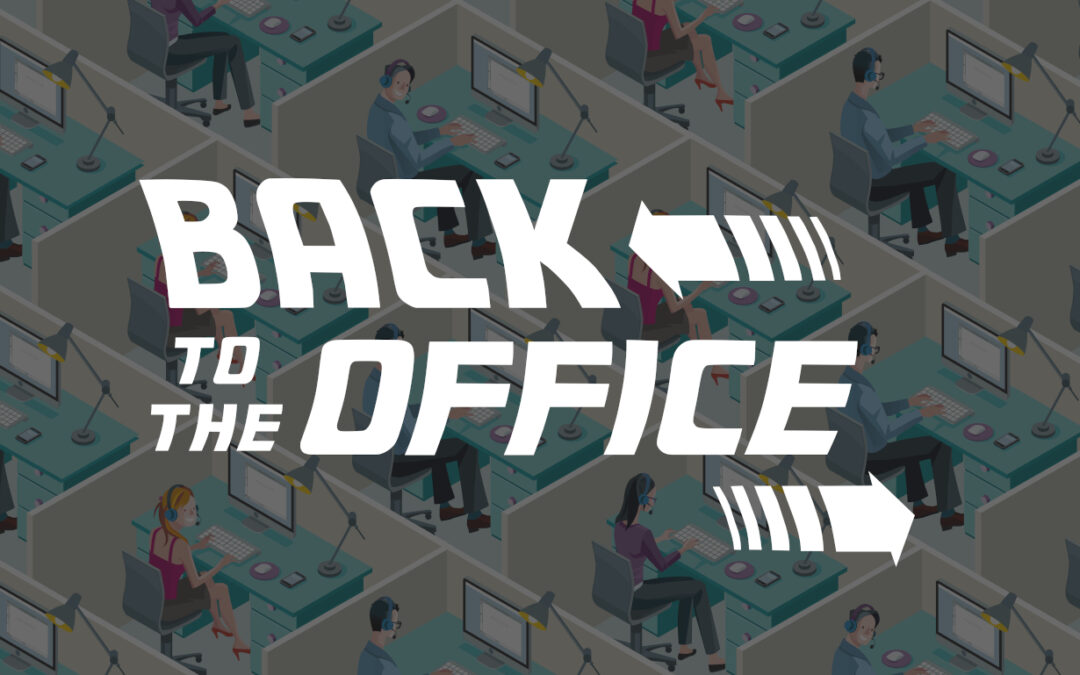
Like it or not, for millions of remote workers “the great return” is inevitable. The big question isn’t if, but when. The big challenge: how to make transitioning back to the office as painless as possible.
Ready…
CEOs are clamoring for their staff to come back, but many have no game-plan for the transition—and they’re going to need one.
 Forbes Magazine reports that “A recent ‘Return to Workplace’ survey conducted by WB Wood, one of the oldest and largest commercial furniture dealerships and management companies in the United States… found that 41.5% of business executives are planning a full-time return to the office. Respondents include executives from companies of all sizes….
Forbes Magazine reports that “A recent ‘Return to Workplace’ survey conducted by WB Wood, one of the oldest and largest commercial furniture dealerships and management companies in the United States… found that 41.5% of business executives are planning a full-time return to the office. Respondents include executives from companies of all sizes….
“Nearly 40% of business executives with decision-making authority or input on office space decisions expect to return to the office in the second quarter of 2021. Over 70% anticipate a return to the office before the end of this year….Troublingly, according to the survey, of those returning, 60.8% have either no plans to reconfigure their office space or do not have a strategy in place.”
…Set…
The truth is that transitioning back to the office seems to make sense for a number of reasons. There’s been an encouraging decrease in COVID cases and an increase in vaccinations. According to CNBC.COM, “More Americans have gotten vaccinated and fewer have gotten sick from COVID in recent weeks. More than 46% of the U.S. population has received one or more shots and 35% is fully vaccinated [to date], according to the Centers for Disease Control and Prevention.”
And state-by-state schools, restaurants, parks, gyms, offices, and other venues are gradually reopening. Along with a fresh infusion of capital into the economy and more job availability across the country—all this makes a pretty rosy picture.
...Whoa!
With this rosy picture in view, some industry leaders are itching to get back into the fray. For smaller businesses, it means the possibility of survival and a chance to restore lost profits. Large and small, many company leaders may feel driven to act in haste. But, if they bring workers back in without a viable plan, they may be flirting with disaster.
Methodical leadership needed
 Quelling the zeal to reopen may be painful, but it may also be necessary. Slow, calculated, methodical planning and leadership must rule the day. And the first order of business is preparing for the health and safety of employees.
Quelling the zeal to reopen may be painful, but it may also be necessary. Slow, calculated, methodical planning and leadership must rule the day. And the first order of business is preparing for the health and safety of employees.
CNBC.COM reports that “One in 10 employed consumers in the U.S. say that nothing would make them feel comfortable working in an environment around other people.” This is per a recent survey of 8,000 by The National Retail Federation and Prosper Insights & Analytics. Many respondents said they’d feel less reluctant if they and their colleagues were vaccinated.”
Planning+preparedness=profits
Among the many concerns business owners and executives must consider and build into their transition plans include:
Reimagined workspaces and policies
- Social distancing protocols—boardrooms, break rooms, cafeterias
- Mandatory vs. voluntary masks protocols
- Compulsory vs. voluntary vaccination policies
- Redesigned work stations [including plexiglass shields]
- Sanitation stations
- Enhanced ventilation
Human resources and humane solutions
- Realistic work hours
- Destigmatized mental health support
- Flexible work assignments
 All of these items require ergonomic insights and detailed planning relative to COVID: supplemental budgets, structural installations, personnel retraining— and all of this will take time.
All of these items require ergonomic insights and detailed planning relative to COVID: supplemental budgets, structural installations, personnel retraining— and all of this will take time.
The old euphemism about the survival of the fittest is just that—an old way of saying “man up or move on”—and it may still apply in some settings. But right now the sacrifice of the forced—those compelled to return to work before they or their offices are ready—may trigger another economic calamity of epic proportions. And this is entirely avoidable with the right guidance by professionals skilled at leading through volatile change.

